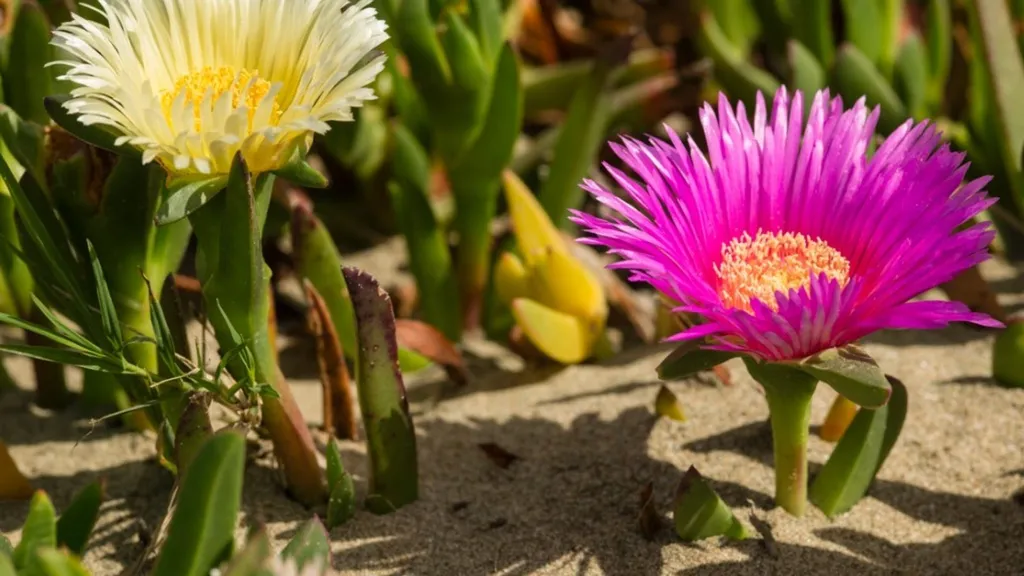In the battle against invasive species, understanding the origins and pathways of invasion is crucial for effective management. A recent study published in the journal Ecology and Evolution, which translates to “Ecology and Evolution” in English, sheds light on the invasion pathways of the slenderleaf iceplant, Mesembryanthemum nodiflorum, along the west coast of North America. The research, led by Clarke J. M. vanSteenderen from the Department of Zoology and Entomology at Rhodes University in Makhanda, Eastern Cape, South Africa, offers valuable insights that could shape future biological control strategies.
The slenderleaf iceplant, a problematic invasive species, is believed to have originated from southern Africa. However, it has also established populations in North Africa and the Mediterranean. To better understand its invasion pathways, vanSteenderen and his team used advanced genetic techniques, including NextGen RADseq and fragment analysis ISSR, to study the population structure and genetic diversity of M. nodiflorum in its native, introduced, and invaded ranges.
The results of the study support a South African origin for the species, as indicated by a higher number of private alleles and overall genetic diversity in that region. Interestingly, the findings suggest a bridgehead effect, where a secondary invasion to North America from Mediterranean populations occurred, rather than a direct invasion from the native range in South Africa.
“This study provides a clearer picture of how M. nodiflorum has spread and established itself in North America,” said vanSteenderen. “Understanding these invasion pathways is essential for prioritizing potential biological control agents.”
The implications of this research are significant for the energy sector, particularly in areas where invasive species can impact infrastructure and operations. For instance, invasive plants can disrupt solar farms by shading panels and increasing maintenance costs. By identifying the source of the invasion, researchers can focus their efforts on finding specialized natural enemies in the native range, which could be more effective in controlling the invasive populations.
“Our results indicate that surveys for potential biocontrol agents should be conducted in the native South African distribution, where the greatest diversity of specialist natural enemies is likely to be present,” vanSteenderen explained. This targeted approach could lead to more efficient and sustainable management of invasive species, ultimately benefiting the energy sector and other industries affected by these unwanted plants.
The study not only advances our understanding of the invasion pathways of M. nodiflorum but also highlights the importance of genetic research in invasive species management. As vanSteenderen noted, “This research underscores the value of genetic techniques in unraveling the complexities of invasion biology.”
By providing a clearer understanding of the origins and spread of invasive species, this research paves the way for more effective biological control strategies. As the energy sector continues to expand, the insights gained from this study will be invaluable in mitigating the impacts of invasive species on infrastructure and operations. The findings published in Ecology and Evolution offer a promising step forward in the ongoing effort to manage and control invasive species, ultimately contributing to a more sustainable and resilient future.

